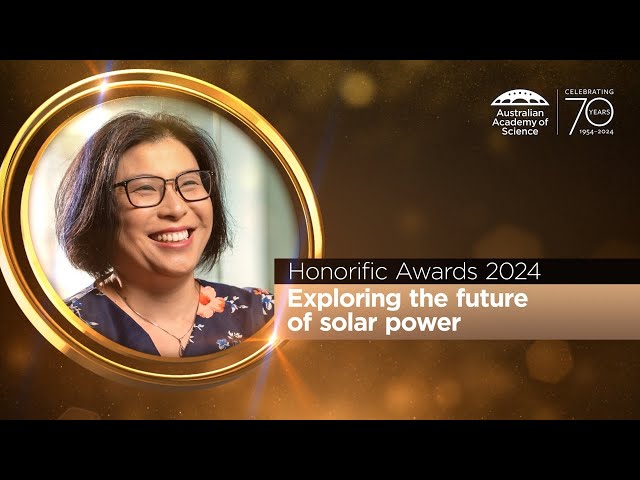Under the blazing sun of Australia, an emblematic figure emerges in the rapidly evolving field of renewable energies. Anita Ho-Baillie, a renowned assistant professor at the University of Sydney, stands out for her remarkable contribution to solar cell engineering. Her passion and determination lead her to explore innovative materials at the nano scale, pushing the boundaries of the efficiency of perovskite solar cells. Bold and visionary, Anita imparts a transformative potential to her research through the intelligent integration of these devices onto all sorts of surfaces, thereby generating invaluable clean energy.
In the vast sky of renewable energies, the name Anita Ho-Baillie shines like a bright star. An assistant professor at the School of Photovoltaics and Renewable Energy Engineering at the University of Sydney, she embodies a driving force in the field of solar cells.
Her work focuses on the engineering of materials and devices at the nanoscale, thus integrating perovskite solar cells onto various types of surfaces to generate clean energy. Her contribution to science is not only significant, but it also opens new perspectives for space applications, thanks to an exceptional power-to-weight ratio and a low-cost manufacturing process.
Renowned for having established several efficiency records in the field of solar cells, she is recognized globally as an authority in her area of expertise. Alongside her Australian colleagues, Anita’s work is regularly reviewed by the U.S. National Renewable Energy Laboratory (NREL).
The trajectory of Anita Ho-Baillie vividly reminds us that the path to a sustainable future is forged through innovation, knowledge, and passion. Her story is an inspiration to all those dedicated to the quest for a world powered by renewable energies.

anita ho-baillie, a visionary in the field of solar cells
Anita Ho-Baillie has devoted her career to exploring innovations in the field of solar energy. As an associate professor at the University of Sydney, she has supported countless pioneering research on perovskite solar cells, a technology recognized for its potential in space applications. Her impressive ability to integrate and customize photovoltaic cells on various surfaces demonstrates her scientific creativity and her multidisciplinary approach focused on sustainable energy. Under her guidance, the Australian team has set energy efficiency records, advanced engineering, and practical application of solar technologies. Learn more.
notable achievements in photovoltaic engineering
Her role as a program manager for perovskite solar cells is just a fragment of her remarkable contribution to innovation in renewable energy. Ho-Baillie stands out for her ability to design materials at the nanoscale to improve the integration of solar cells while ensuring enhanced efficiency and durability. By leveraging new forms and structures, she has demonstrated that solar energy can be integrated into varied contexts, thus offering a range of green energy solutions for the future. Her work has been widely recognized by international institutions, including the U.S. National Renewable Energy Laboratory, confirming her status as a global authority in this field. Discover her profile.
Professor Anita Ho-Baillie has built a bridge between the theory and practice of photovoltaic systems, achieving performance levels never before reached in the industry. Her research on low-cost and high-performance perovskite cells has laid the groundwork for their practical application, thus contributing to their adoption in large solar energy projects. Her involvement with the Institution of Engineers Australia and her recognition as a Clarivate Highly Cited Researcher reaffirm her central position in global energy innovation. You can learn more about her accomplishments by visiting the UNSW website.
global impact of her work
Anita Ho-Baillie’s research extends beyond university laboratories. It creates a broad impact on how energy is produced and consumed worldwide, thus influencing energy policies and overall sustainability goals. The future of amorphous and organic solar cells largely depends on her advancements in this field, making clean technologies more accessible and viable at scale. Thanks to her investigations, not only the academic sector but also several private tech companies are turning to the innovations she has inspired to transform global energy production. For a deeper insight, check out this article.
Articles similaires
Thank you!
We will contact you soon.














